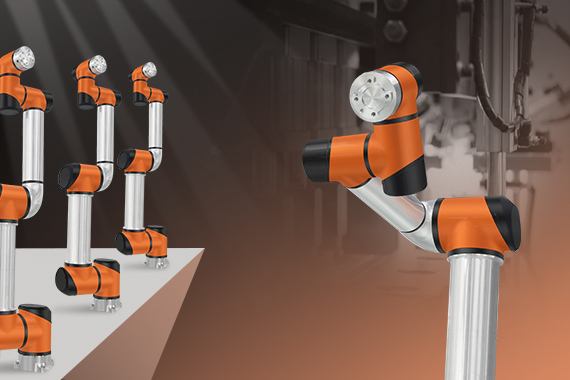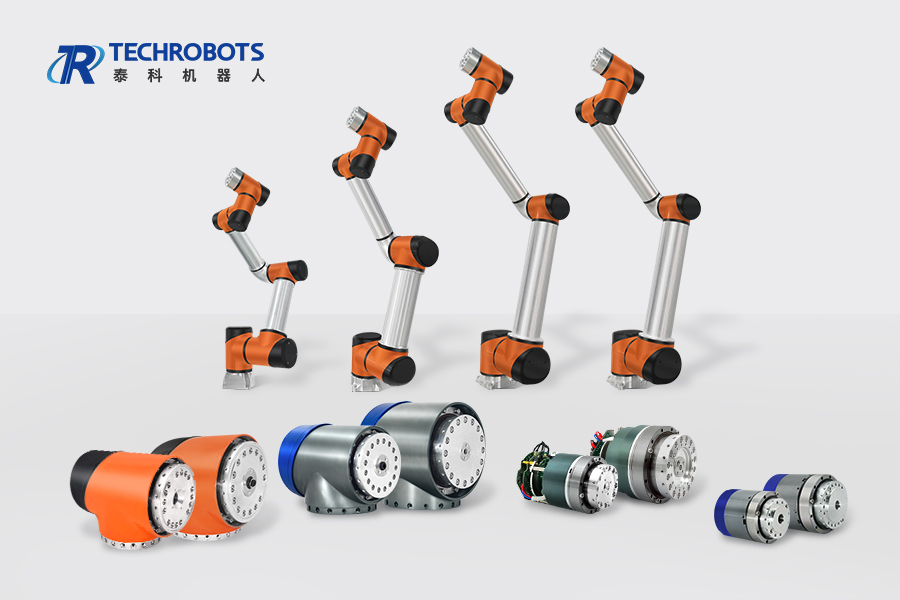How can co-robots help complete work efficiently under harsh working conditions
Date:2020-06-19
Co-robots may differ from traditional industrial robots due to their design and compact structure, such as timing, accuracy, stiffness, and endurance in extreme environments. By contrast, co-robots, which are known for their flexibility, are compact, flexible to deploy, easy to program, and can share workspaces with humans without the need for a security fence, so in many scenarios, co-robot talents can bring their unique expertise to bear.
In the working scene of Techrobots, we often encounter some special working conditions (such as high temperature and humidity, dust, radiation, etc.). Then let's take a look at "How to define the limit environment" :

1. Harsh working environment: high temperature and humidity, dust, radiation, etc.
2. Man-machine integration: One is a mature process product that is not equipped with a high level of automation transformation, at which time the man-machine collaborative automation upgrade has a better cost performance and lower technical risk; the other is an inevitable man-machine collaborative environment established in the automation process of improving the existing production line.
3. Highly flexible automated production: more and more automated production lines are required to accommodate more product production with fewer production lines, so as to realize quick switch of production lines and meet the demands of segmated product markets and small-batch customer orders.
4. Automatic transformation in small space: There are mainly two situations: one is the upgrading of some early automatic production lines, which need to be automated transformation in a specific and small space; the other is the internal assembly, welding, locking and testing of products with complex shapes, which need to be operated in a small space.
The advantages of techrobots in the above situations include:
Techrobots has many years of experience in co-robot design, development and production. Rich experience in dealing with harsh working conditions, mature solutions and practical applications in high temperature, humidity, radiation and other harsh environments;
Co-robot are designed for such a man-machine collaborative environment. Compared with industrial robots, co- robots have better human-machine cooperation security and lower user costs to the minimum. techrobots not only has excellent man-machine cooperation security, but also has a good programming environment, even if the inexperienced operator can also learn and master operation skills in a short time.
From the point of view of robots, one direction of implementation of highly flexible production lines is to establish rapid switching applications. Co-robots are characterized by light weight, arbitrary installation Angle and flexible operation space, which contribute to the flexible deployment characteristics of co-robots. In the highly flexible production process, users can switch applications of robots on demand. Based on the characteristics of co-robots, Ait focuses on the application unit application development of modular co-robots, aiming at smaller floor space, higher flexibility and faster functional switching.
Techrobots is simple to deploy, flexible to install and drag to teach. The smallest co-robot weighs only 11.5kg, which makes it occupy a unique advantage in a small space.

Techrobots as a professional co-robot and joint module development and production enterprises, to provide customers with a set of co-robot solutions, even in the production process, robot joint failure, but also can quickly replace the damaged parts in the joint, so as not to affect the entire production process. Joint parts are light and compact, easy to carry, and can be quickly resumed production after replacement, which will greatly reduce the shutdown loss of the factory. Therefore, Techrobots , in the development and production of co-robot, has been committed to optimize the robot joint module, reduce the later customer use of co-robot maintenance costs.
In the working scene of Techrobots, we often encounter some special working conditions (such as high temperature and humidity, dust, radiation, etc.). Then let's take a look at "How to define the limit environment" :

1. Harsh working environment: high temperature and humidity, dust, radiation, etc.
2. Man-machine integration: One is a mature process product that is not equipped with a high level of automation transformation, at which time the man-machine collaborative automation upgrade has a better cost performance and lower technical risk; the other is an inevitable man-machine collaborative environment established in the automation process of improving the existing production line.
3. Highly flexible automated production: more and more automated production lines are required to accommodate more product production with fewer production lines, so as to realize quick switch of production lines and meet the demands of segmated product markets and small-batch customer orders.
4. Automatic transformation in small space: There are mainly two situations: one is the upgrading of some early automatic production lines, which need to be automated transformation in a specific and small space; the other is the internal assembly, welding, locking and testing of products with complex shapes, which need to be operated in a small space.
The advantages of techrobots in the above situations include:
Techrobots has many years of experience in co-robot design, development and production. Rich experience in dealing with harsh working conditions, mature solutions and practical applications in high temperature, humidity, radiation and other harsh environments;
Co-robot are designed for such a man-machine collaborative environment. Compared with industrial robots, co- robots have better human-machine cooperation security and lower user costs to the minimum. techrobots not only has excellent man-machine cooperation security, but also has a good programming environment, even if the inexperienced operator can also learn and master operation skills in a short time.
From the point of view of robots, one direction of implementation of highly flexible production lines is to establish rapid switching applications. Co-robots are characterized by light weight, arbitrary installation Angle and flexible operation space, which contribute to the flexible deployment characteristics of co-robots. In the highly flexible production process, users can switch applications of robots on demand. Based on the characteristics of co-robots, Ait focuses on the application unit application development of modular co-robots, aiming at smaller floor space, higher flexibility and faster functional switching.
Techrobots is simple to deploy, flexible to install and drag to teach. The smallest co-robot weighs only 11.5kg, which makes it occupy a unique advantage in a small space.

Techrobots as a professional co-robot and joint module development and production enterprises, to provide customers with a set of co-robot solutions, even in the production process, robot joint failure, but also can quickly replace the damaged parts in the joint, so as not to affect the entire production process. Joint parts are light and compact, easy to carry, and can be quickly resumed production after replacement, which will greatly reduce the shutdown loss of the factory. Therefore, Techrobots , in the development and production of co-robot, has been committed to optimize the robot joint module, reduce the later customer use of co-robot maintenance costs.
Previous Article: How to select a driver for the collaboration robot
Next Article: Is flexible robot the development trend of collaborative robot?